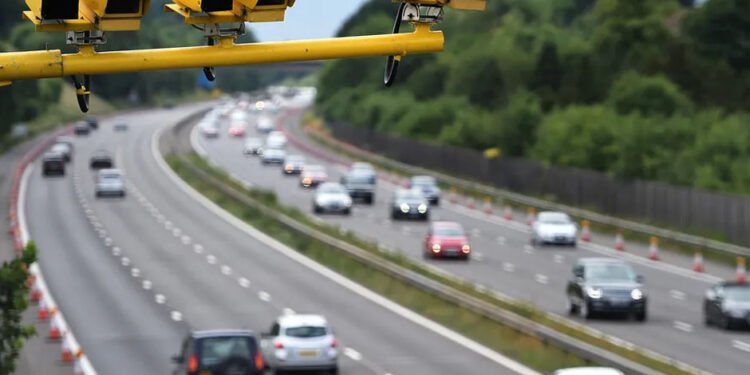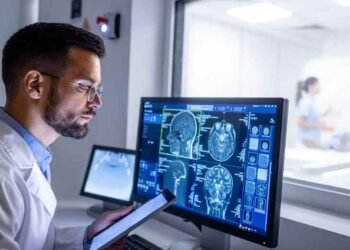While technology constantly changes how modern urban areas are developed and designed, AI-enabled traffic cameras have grown significantly to enhance road safety and traffic flow. Designed by fusing powerful artificial intelligence with old-school surveillance, these intelligent systems are meant to make our transportation networks more efficient. In this piece, we will detail how they work, their advantages, and the pros and cons of applying an AI-based system to monitor traffic. These innovative solutions promise to provide a safer environment for road users. They are vital for solving today’s need for innovative urban infrastructure issues that cities face with increasingly significant populations and traffic volume.
What Are AI Traffic Cameras?
It is an advanced technology consisting of machine learning algorithms and computer vision technology that gets deployed into the traffic AI camera. Instead of just capturing footage like traditional traffic cameras, AI cameras process data in real-time to recognise vehicles, assess traffic patterns and violations, and even predict collisions. This ability turns such operators from passive bystanders to real-time traffic stewards, empowering rapid action towards any developing situation. Meanwhile, their expansive data-capturing and managing capabilities help the process of traffic system design and urban planning get better every day.
Key Features of AI Traffic Cameras
- Real-Time Analysis: The processed video feed of these cameras helps analyse the traffic conditions and incidents that happened.
- Automatic License Plate Recognition (ALPR): Cameras can photograph and image license plate numbers, helping identify vehicles if traffic surveillance recordings need to be reviewed due to illegal or harmful activities.
- Incident Detection: AI cameras can detect abnormal patterns or stopped vehicles and alert traffic management centres to incidents before they worsen.
- Traffic Flow Management: AI cameras analyse traffic volume and speed to enhance signal timings and improve efficiency.
- Data Collection and Reporting: AI cameras collect data that is helpful to municipalities in city planning and making informed decisions about infrastructure enhancement.
Benefits of AI Traffic Cameras
Enhanced Safety
AI traffic cameras contribute significantly to road safety. By detecting violations such as speeding or running red lights, they help enforce traffic laws more effectively. This, combined with the ability to monitor traffic patterns, can also stop accidents from happening. It informs potential safety jurisdictions that are ‘hot spots’ where and when education is required and requires infrastructure improvements to enhance the overall level of safety. Moreover, this efficient company approach not only addresses the current environmental degradation but, at the same time, is expected to bring notable positive change toward long-term safe & sensible driving practices.
Improved Traffic Flow
Many urban areas suffer from traffic congestion. By performing the analysis of real-time data, AI cameras can control traffic signals and regulate flows in a dynamic way that could result in fewer wait times and an increase in overall driving behaviours. This flexibility can reduce congestion and make drivers’ lives less stressful, which is a significant source of urban goodness. This process also encourages cities to make the most of existing roadways, reduce the need for expensive infrastructure expansions, and mitigate pressures on public transport systems.
Efficient Resource Allocation
With artificial intelligence cameras, law enforcement and traffic management agencies can allocate better resources based on this information. Associations can move cops to where and when they are most readily needed by identifying high-risk spots for traffic crimes. Law enforcement can be more effective when resources are targeted, as they are in this case, where they are needed the most. Also, the resulting data can be used to improve cross-agency collaboration in understanding traffic safety issues and solutions.
Cost-Effectiveness
Although the upfront investment in AI traffic cameras can be substantial, their lasting impact is worthy. Fewer crashes and better traffic management simultaneously reduce the financial burden of maintaining their infrastructure and mean that police forces can be much smaller. Moreover, the savings made by reducing accidents can funnel back into community services and improvements. This financial justification can secure funding and support for broader implementation, making it a sustainable option for municipalities.
Environmental Benefits
AI traffic cameras have obtained cutting-edge technology to optimise traffic patterns, thereby reducing vehicle emissions. Smoother driving conditions result in less idle time and lower fuel consumption due to traffic flow, which can also reduce harmful exhaust emissions associated with air pollution. This is linked to the above environmental benefit and helps reduce carbon footprints per global target for addressing climate change. With the move toward more sustainable cities, AI traffic cameras can be vital to developing carbon-neutral urban spaces.
Challenges and Considerations
Despite the numerous advantages of AI traffic cameras, several challenges must be addressed:
Privacy Concerns
Surveillance technology touches on the sensitive issue of privacy. Communities are striving to address safety and manage traffic while protecting the privacy of individual citizens. Transparent policies regarding data usage and storage are essential.
Implementation Costs
Although AI traffic cameras are cost-effective in the long run, their setup and integration into existing infrastructure might be costly. Governments should consider how to pay for them and what they need in the long term, so this is an opportunity to get shovel-ready projects in place.
Dependence on Technology
Like all technology, there is a potential for us to rely on AI traffic cameras too heavily. It is important to note that this technology needs human oversight at all points to ensure it functions correctly and anomalies are immediately resolved.
Conclusion
The new technology of AI traffic cameras has opened a treasure trove of intelligent options for perfect traffic management. The feature of real-time analysis, making cities safer and improving traffic conditions with artificial intelligence, is enabled by those systems. In the ongoing development of our towns, integrating AI-based traffic cameras into infrastructure could be vital in facilitating safer streets with traffic that flows more smoothly. Balancing these gains with privacy and implementation challenges will be necessary to ensure they bring the public good without undermining trust in their deployment. Groundwork will be appropriately done to add these innovations into the urban landscape as we step further into more intelligent, safer cities.












